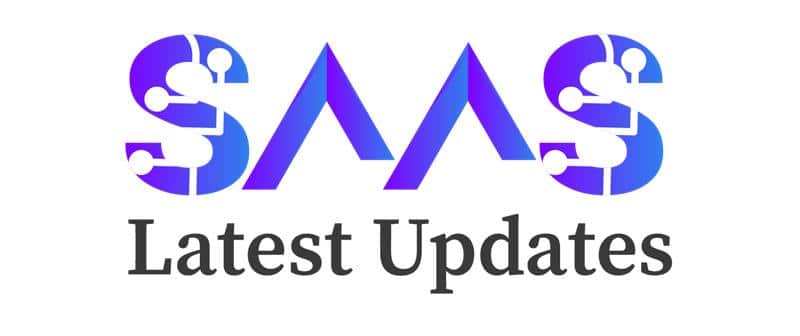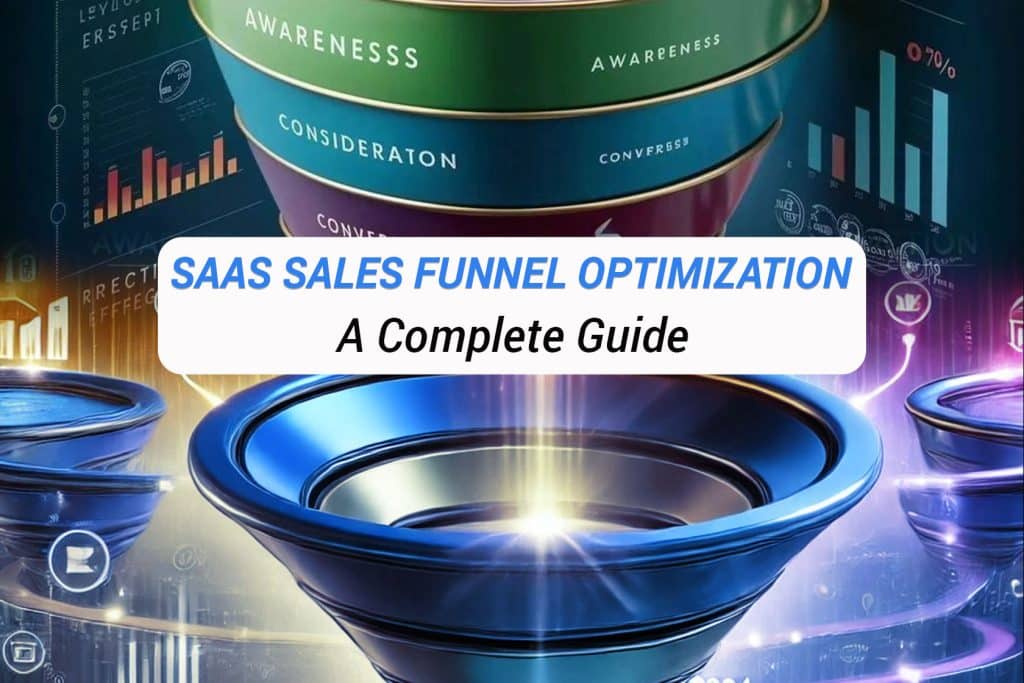Around ten years ago, the SaaS market was not oversaturated. Every product found its audience easily. However, the time has changed. Now with so many products, the audience has become more selective, cautious, and demanding.
Now, you have to guide your target audience through your selling process until they are ready to become your customers. In other words, they can only become your customer until they reach the end of the SaaS sales funnel.
But how to make your SaaS sales funnel work? In this guide, we will explore SaaS sales funnel optimization, its stages, strategies, metrics, and examples.
30-Second Summary
Every SaaS company wants to grow in the overcompetitive industry. For this purpose, it needs a sales funnel. A sales funnel helps your prospects turn into customers through guidance at every stage.
If you want to create an effective SaaS sales funnel, keep reading. In this blog, you will learn the stages of a sales funnel, strategies for SaaS sales funnel optimization, metrics to measure the success and loss rate, and much more.
What is SaaS Sales Funnel Optimization and Why It Matters?
The SaaS sales funnel is also known as the SaaS marketing or conversion funnel. It is a multi-stage selling process. It starts from building your brand’s awareness in the minds of potential customers and extends beyond the first payment.

Many customers may not strictly follow the funnel; some of them go from awareness straight to purchasing. However, it is a good idea to develop it in the first place.
SaaS sales funnel optimization is the process of enhancing the customer journey within a SaaS business. You need to analyze each stage of the funnel and identify any bottlenecks to ensure more conversions.
It is important for the following reasons.
- It helps in understanding the customer journey.
- It identifies opportunities and gaps.
- It boosts your conversion rates.
- It predicts sales and revenue.
- It helps allocate resources efficiently.
- It improves customer retention.
SaaS Sales Funnel Stages
The four main stages of the SaaS sales funnel are awareness, engagement, exploration, and conversion.

Awareness
In the awareness stage, your potential customers are asking questions and looking for their answers. They are not fully aware of the problem and are not searching for a particular solution.
At this stage, they are becoming aware of your company and its products, probably through word of mouth, social media, or content marketing.
As the customers come to your website from different channels, your goal is to catch their attention and increase brand awareness.
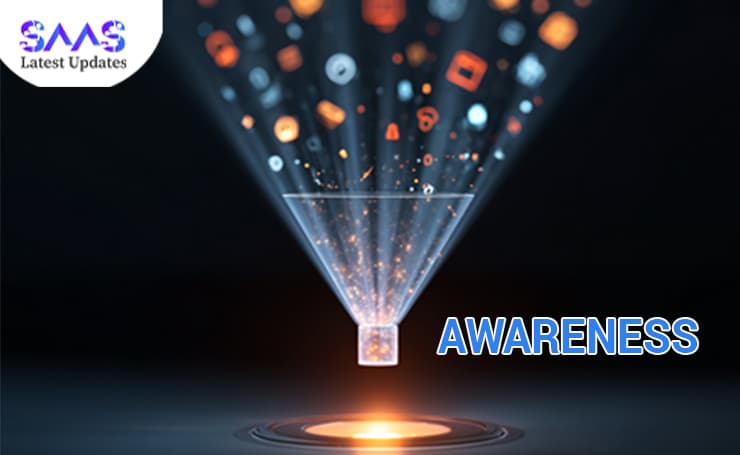
Engagement
This is the stage when people start interacting with the content of your website, such as blogs, emails, and guides. Provide an entry point to your target customers through free material or a lead’s signup for your demo.
This interaction with your website shows that your target users are interested in your services or products. This is the right time to provide them with more detailed information to hold their attention.
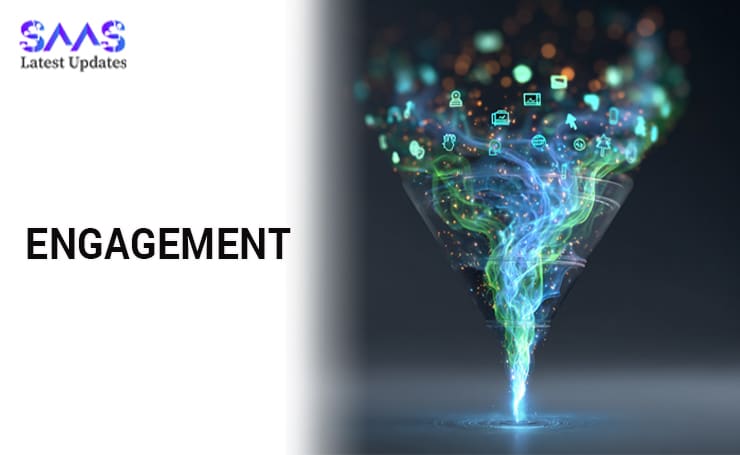
The engagement stage is the longest, as it takes time for people to decide if they trust your brand enough. Show them how your product is the solution to their problem.
Exploration
At the exploration stage, leads compare different SaaS products and analyze how your product can address their pain points. You need to highlight the benefits of your products and show them how you are better than your competitors.
The main goal here is to convince your leads that your service or product is the one that suits their needs. You can also opt for free trial funnel optimization. You can give a free trial to the prospects so that they can see what your product offers. This technique maximizes the number of users who convert into paid customers.
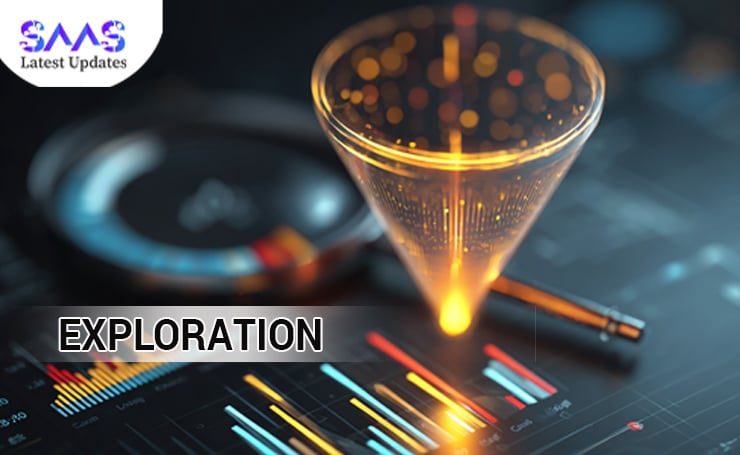
Moreover, intuitive onboarding will show the value of your SaaS product. A well-thought-out onboarding sparks that Aha moment where your lead knows that your product is the best for them.
Conversion
At this stage, your prospect is ready to become your customer. Apart from selling, retaining your customers is very important as well. The SaaS businesses work on a subscription model.
A well-structured SaaS customer acquisition funnel ensures an increased retention rate.
For a recurring revenue (monthly or yearly), you need to focus on making the customers stay.
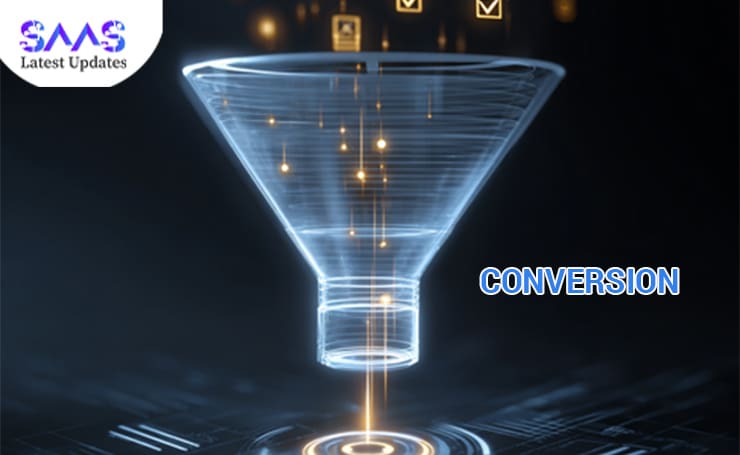
Have a look at the tips to retain your customers.
- Make sure that the conversion step is simple and straightforward.
- Your SaaS should be compatible with all types of screens, particularly the screen of a mobile phone.
- Create a feedback or communication channel within the product to encourage input, seek assistance, and report issues.
- To improve the SaaS funnel conversion rate, optimize the checkout page for a smooth transaction.
Customer Advocacy
Another stage is customer advocacy, which is often not discussed. When you improve SaaS sales funnel, you get the trust and loyalty of your customers. In this cutthroat competition, brands want to be referred to by their clientele.
Moreover, customer loyalty is important for the growth of a business. Reviews from satisfied customers are important to stand out in this era of social influence.
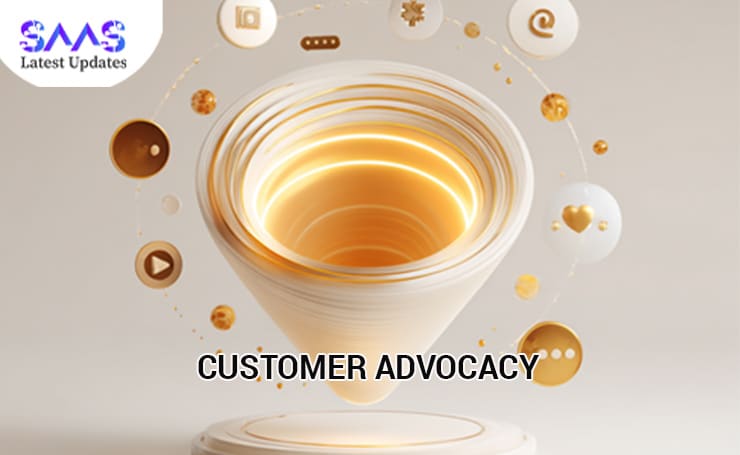
This stage should also remain in your mind when you are creating a SaaS sales funnel and working on its optimization.
B2B SaaS Sales Funnel
The B2B SaaS sales funnel is more complex than the B2C. It involves longer sales cycles, various stakeholders, and more contract values. B2B clients need demos, trials, and ROI to see if they commit to your product or service.

Which Team Owns Which Stage?
If you want to make your funnel function properly, create a clear distinction between teams that are handling each stage.
Marketing Team handles Top of the Funnel
At the top of the funnel (TOFU), the marketing team is responsible for generating brand awareness, attracting leads, and engaging them.
- The team should drive inbound traffic through paid ads, SEO, and content marketing.
- The marketing team should engage leads through retargeting ads and email campaigns.
- The team should collect the data to analyze if prospects fit the Ideal Customer Profile (ICP).
Sales Team handles Bottom of the Funnel
The sales team owns the bottom of the funnel (BOFU). When a lead shows interest in buying, they are moved to the sales pipeline. At this stage, the focus of the sales team is:
- To engage MQLs and SQLs to see their readiness to buy.
- To provide demos and discovery calls to analyze the needs of the leads and show them their solutions.
- To negotiate contracts and pricing to convert prospects into paying customers.
For B2B SaaS sales funnel optimization, consider the following key elements.
- Personalized targeting through account-based marketing
- Various types of content to enable sales, such as white papers, case studies, and ROI calculators
- Free trials to showcase the value of your product
- A personalized onboarding SaaS approach to ensure product adoption at scale
Key Stages of B2B SaaS Sales Funnel
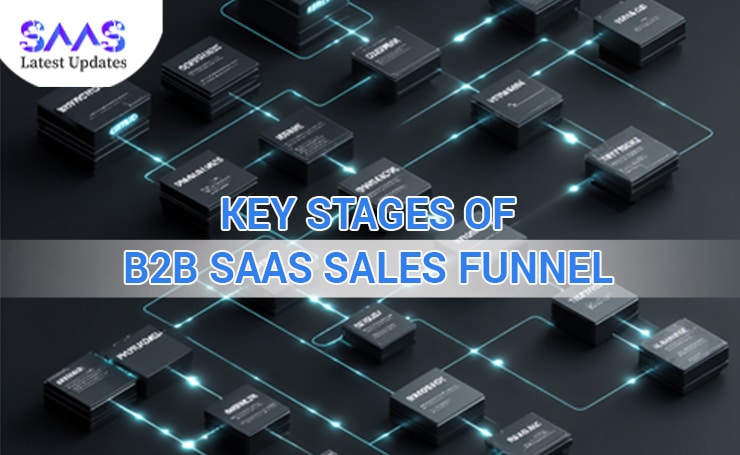
- Lead generation
- Lead qualification
- Product demonstration
- Contract proposal and negotiation
- Closing the deal
- Retention and expansion
SaaS Funnel Optimization Strategies
A solid strategy is necessary in optimizing SaaS sales funnel. It smoothly guides the prospect from the awareness stage to the conversion stage.
Below are some effective SaaS sales funnel optimization strategies you should implement.
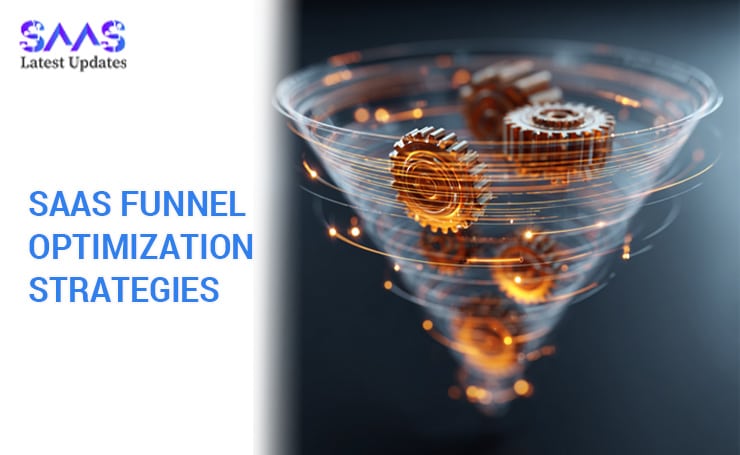
Content-Driven Lead Generation
Content is one of the most powerful tactics for SaaS brand awareness. Create blogs, ebooks, case studies, webinars, and videos to show that your product is a solution to the pain points of clients.
Content plays an important role in SaaS funnel lead nurturing, which is non-negotiable in the competitive SaaS industry.
Lead Scoring and Prioritization
Not all leads are ready to become your customers. In this scenario, lead scoring helps you identify the prospects that can become your loyal customers. You can identify these leads through their actions.
A lead who signs up for a free trial and engages with the features will likely become a customer. You should prioritize these high-quality leads.
Lifecycle Marketing
The SaaS sales funnel does not end at acquisition. It keeps going throughout the lifecycle of a customer. In lifestyle marketing, ensure that your communication is personalized.

- Send educational content and emails to new leads.
- Highlight the features of your product for trial users.
- Promote loyalty programs and upgrades for existing customers.
Churn Prevention and Customer Success
SaaS sales funnel optimization is about the retention of customers. Due to the subscription model, a small increase in retention improves revenue significantly.
Below are SaaS funnel retention strategies to avoid churn.
- Provide active customer support to address issues promptly before frustration builds.
- Encourage feedback to identify gaps and improve them.
- Create customer success programs to ensure that your clients achieve their goals using your product.
SaaS Sales Funnel Optimization Example
Have a look at some examples that used these tactics to grow their SaaS business.
- HubSpot grew its SaaS business by offering free tools, high-quality content, and guides. It is now positioned as an authority in the market.
- Slack assigns customer success managers to enterprise clients. It ensures long-term satisfaction and adoption and reduces churn rate significantly.
- Dropbox uses referral programs to improve client acquisition.
SaaS Sales Funnel Metrics
To measure SaaS funnel analytics and see if your tactics are working, you should track metrics.
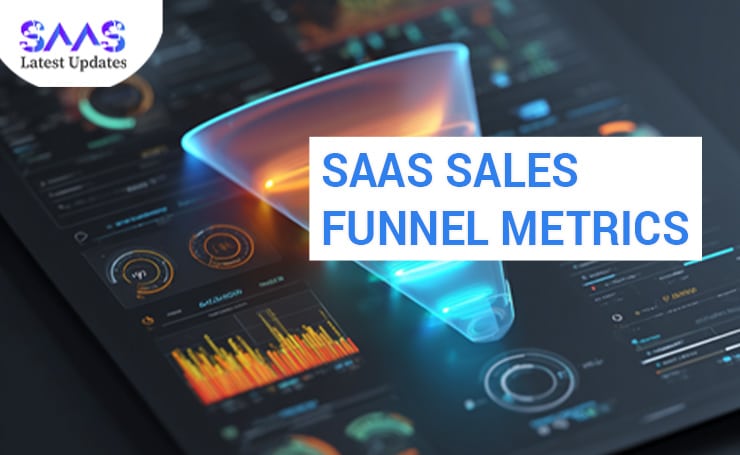
Some important metrics for SaaS sales funnel optimization are:
- The Lead-to-MQL ratio shows if the marketing campaign is attracting high-quality leads.
- MQL to SQL conversion shows how well sales is qualifying leads.
- Customer Acquisition Cost (CAC) shows the cost of acquiring a new customer.
- Lifetime Value (LTV) shows the total revenue expected from one customer.
- Churn rate showcases the percentage of users leaving during a given time period.
- SaaS funnel conversion rate shows the percentage of leads that convert to paid users.
SaaS Funnel Bottlenecks
There may be some bottlenecks that are reducing the impact of SaaS sales funnel optimization.
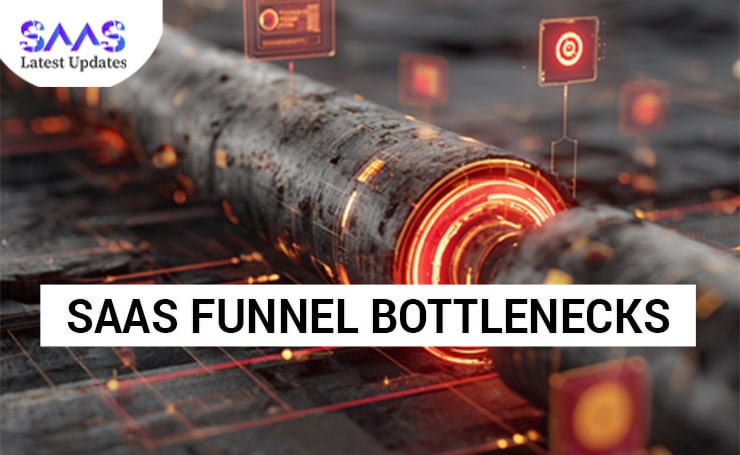
- Confusing pricing models
- Complex signup procedure
- Poor onboarding that leads to abandonment of the trial
- Lack of follow-up on potential leads
How to Streamline SaaS Funnel
Streamlining the SaaS funnel means removing unnecessary steps that slow down conversions.
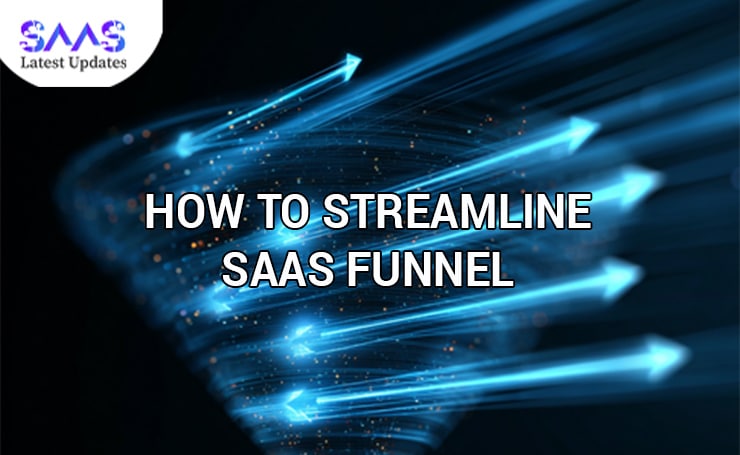
Some tips for this are below.
- Create a frictionless signup SaaS process.
- Reduce form fields in signups.
- Implement SSO logins.
- Automate email sequences for lead nurturing.
- Create a smooth trial-to-paid flow.
Sales Funnel Optimization for SaaS Case Study
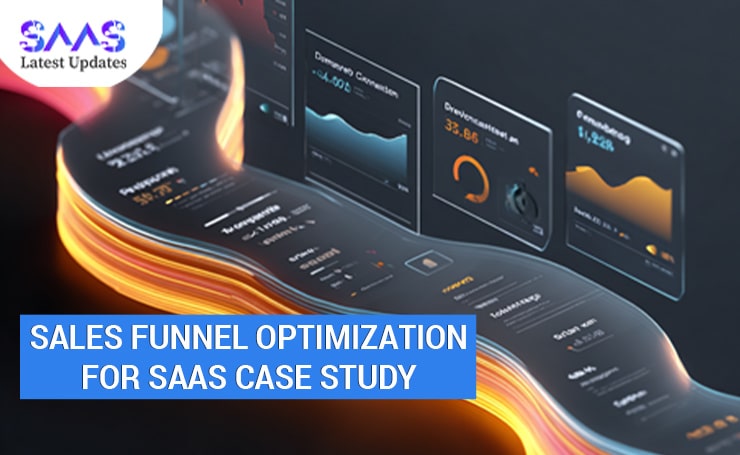
Netflix: In the beginning, Netflix offered free trials to attract new customers. The trial lasted 30 days, and users could easily analyze its streaming and library of shows. At the start of 2025, Netflix had around 310 million subscribers.
Grammarly: Grammarly’s sales funnel strategy is based on a multi-level channel. It increased its brand awareness through careful ad placement. The paid video ads on YouTube and TV target students, job seekers, and other people who need writing assistance.
Groupon: The smooth user experience of Groupon made it a success. It has a streamlined navigation interface. Customers quickly find the coupons they need. Moreover, their personalized emails and clear CTAs encourage users to act on impulse and make a purchase.
Wrapping It Up
SaaS sales funnel optimization is not something you do once and leave it. It is an ongoing procedure of improving your strategies to provide a smooth customer journey, from the awareness stage to the retention stage.
When you focus on each stage and improve it, you see a drastic increase in conversion and retention rate. Moreover, by properly optimizing your SaaS sales funnel, you can avoid churn rate.
Nurture your leads, streamline free trials, optimize onboarding, and provide a seamless signup to see your prospects turn into loyal customers.
Interested in more SaaS-related information? Feel free to explore the Latest SaaS Updates.
FAQs
Why is the SaaS Sales Funnel important?
The SaaS sales funnel is necessary for brand awareness, attracting and nurturing leads, and converting them into loyal customers. A successful sales funnel is determined by its customer retention rate, which means customers continue to pay monthly.
Is the SaaS Sales Funnel always Linear?
No, sometimes a customer goes from the awareness stage to the conversion stage. This is why it is important to use Google Analytics 4 funnel exploration. You can identify what stage your lead is in and guide them from there through this tool.
How can You Analyze a Sales Funnel?
If you want to evaluate the effectiveness of your sales funnel, you need to track metrics. A low number of leads means issues with the top of the sales funnel. Few opportunities signal problems with the middle stage of the funnel, while a low win rate indicates issues at the bottom stage of the funnel.
What should a SaaS Company do to scale its Funnel Internationally?
If you are thinking of targeting an international market, localization is important. Opt for region-specific SEO, testimonials, and appropriate CTAs. The onboarding should be tailored to the market of that particular region.
